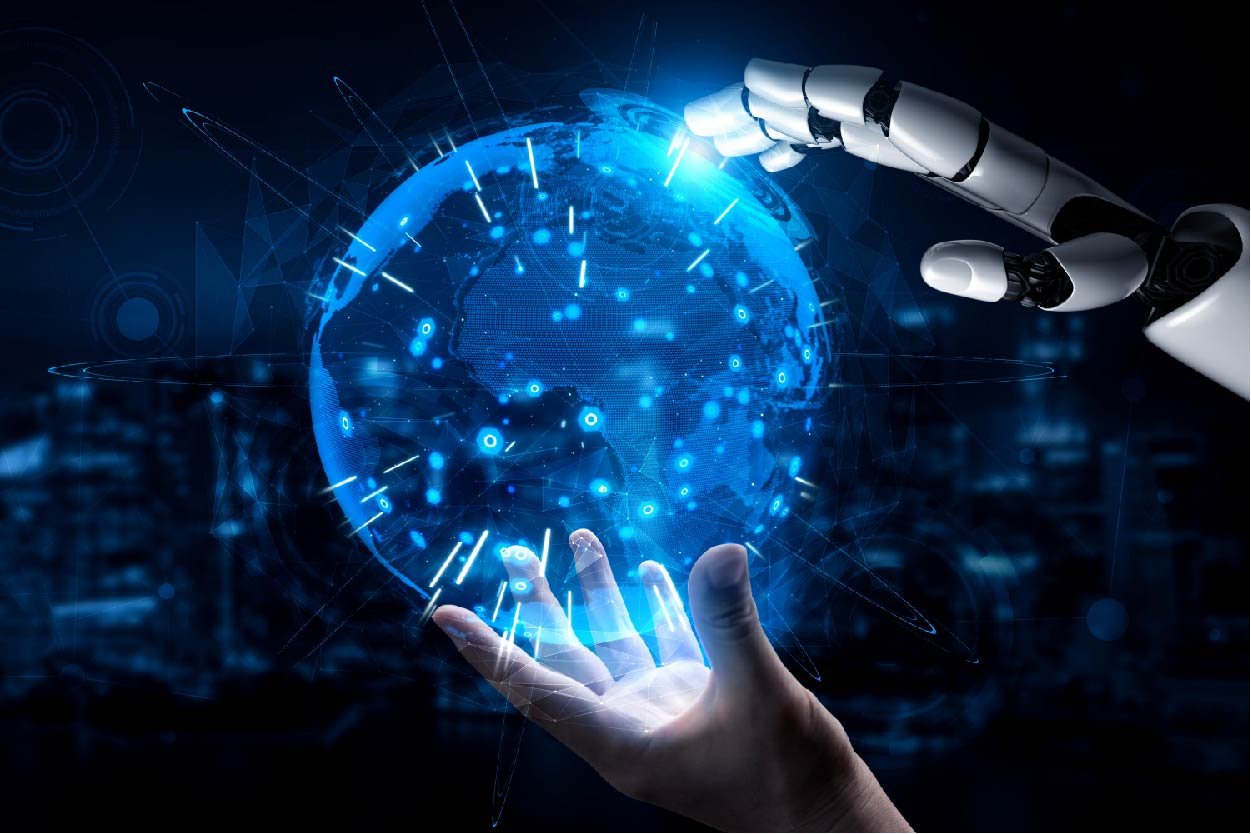
While most businesses are striving for Industry 4.0, there has already been a heated discussion over Industry 5.0.
Steam power, assembly lines, electrification, automation, digitalization are solid evidence of how technological innovations are means of economic progress. The fifth industrial revolution, or Industry 5.0 radically changes this paradigm since it places a less emphasis on technology and brings human back to the loop. Let's learn about the concept of Industry 5.0 and howit benefits business leaders.
The next step is Industry 5.0
The motivation of Industry 4.0 is mass production as several technologies like artificial intelligence, cloud computing, etc. are involved to automatebusiness processes and allow for edge computing in an intelligent and distributed fashion. Subsequently, Industry 4.0 inadvertently overlooks the human cost caused by business processoptimization. Specifically, parts of society are likely to feel left out due to the assumption that jobs are being replaced by automation or their lack of skills necessary for the newly created positions. This problem will become clear in the next few years once the full effect of the fourth industrial revolution comes into play.
Additionally, while robotics and automation excel in the high volumes, standardized production, the human being is key when it comes to creativity. The natural solution to such problems is the collaboration of humans and robots. Enter Industry 5.0. Industry 5.0 is considered to be the re-humanization of the race towards automated business processes. The core vision of the next industrial revolution is that humans and robots work side by side wherever and whenever possible.
Industry 5.0 - What it means for business leaders
The rise of cobots to assist human workers
Unlike how science-fiction movies depict the future, the fifth industrial revolution would not make the involvement of humans in the production process obsolete. Instead, as mentioned above, it would incorporate technological advancements at the workplace to boost collaboration between humans and machines. In such a context, the notion of collaborative robots has been proposed.
Collaborative robots, or cobots are developed to work in tandem with human workers. As the fifth industrial revolution takes place, cobots would be smart enough to understand the needs of the human worker and decide if they need support, evaluatethe risk,pay attention to safety factors, andhen safely approach to the worker. Functional near-infrared spectroscopy (fNIRS) is anticipated to become an important sensor to predict human intentions. fNIRS is a hemodynamic neuroimaging brain-computer interface technology that can retrieve signals from the human brain.
It should be noted that to carry out such collaborative tasks, cobots should first be developed to be safe in proximity to humans. For instance, a cobot should have sensors to state the risk of collision with a human operator and thereby alter its path to avoid it. Being lightweight and easy-to-use are other desired features of cobots that could enhance the performance of employees with limited or no skills in programming. Given the current trend and pace in machine learning, deep learning, scientists will soon achieve these required abilities of a cobot.
The burgeoning demand for hyper-personalization
While Industry 4.0 has laid a foundation for personalization and customization, the next industrial revolution would provide customers with hyper-personalized products and services at scale. Specifically, the final product will be created for the individual customer based on their personal requirements.
Here’s what hyper-personalization looks like. Type-1 diabetes patients are equipped with a device that measures their sugar level and draws blood. This device communicates with another device which then pumps the right amount of insulin into patients’ blood. However, it is not a one-size-fits-all approach that might be compromised as people have varying metabolic rates, lifestyles, etc. Moving to Industry 5.0, it is expected that there would be a personalized device of diabetes management that considers factors related to one's lifestyle, diet, physical activities, etc. to provide tailor-made treatment programs.
Industry 4.0 already allows apparel customers to choose custom design elements such as materials, colors, etc. for their clothing items. In the fifth industrial revolution, garments could be produced to fit customers’ unique body shapes based on body scans or personal data.
The birth of a myriad of employment positions
The fear of robots displacing workers is largely conjectural. In fact, Industry 5.0 will create more jobs than it takes away. Talents who will be in demand in this industrial evolutionwhoshouldhave genuine creativity that enables them to bring the human touch to products and services. They shouldhave a discerning eye to make adjustments.
The progression of Industry 4.0 also fuels the introduction of the concept “Chief Robotics Officer” (CRO) within the manufacturing industry. CRO will be making decision for robots or machines to be removed or added to the factory floor to attain optimal performance. They are likely to have profound knowledge of artificial intelligence, robotics and human-machine interactions.
Wrapping up
In Industry 4.0, firms globally are determined to automate business processes and connect smart devices. This relieves human workers from repetitive and rule-based tasks. The next industrial revolution is about human touch and aims to bridge the gap between robots and highly skilled labor force.
Interested in more technology articles? Click here to learn more!
References
Demir et al. (2020). Industry 5.0 and Human-Robot Co-working.
Raconteur (2020). What will Industry 5.0 Mean for Manufacturing.






























